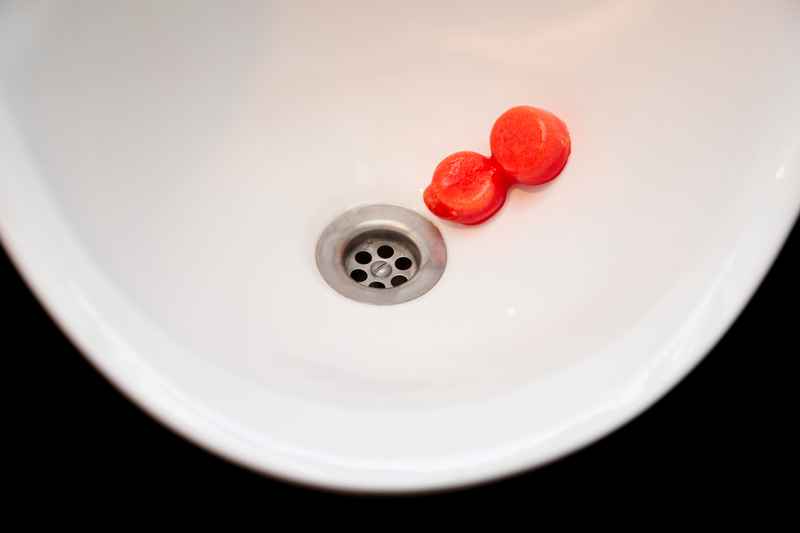Achieve a Gleaming Stovetop by Tackling Burnt Residue Efficiently
Posted on 26/05/2025
Achieve a Gleaming Stovetop by Tackling Burnt Residue Efficiently
A clean stovetop isn't just about aesthetics - it's essential for optimal kitchen hygiene, efficient cooking, and the longevity of your appliance. Yet, stubborn, burnt-on grease and residue can be a real headache for home cooks. Whether you have a gas, electric, or glass cooktop, mastering the art of removing burnt residue is crucial for achieving a sparkling, gleaming stovetop. In this comprehensive guide, we'll explore expert techniques, trusted cleaning solutions, and prevention tips to help you tackle burnt-on messes quickly and effectively.


Why Is Removing Burnt Residue Important?
Over time, spills and splatters from boiling pots, frying pans, and baking trays harden into stubborn, burnt residue. Neglecting cleaning burnt-on food can result in:
- Permanent stains on glass or enamel surfaces
- Unpleasant odors every time you cook
- Reduced efficiency and heat output from gas burners
- Potentially hazardous buildup that can affect your food's flavor and quality
- An unsightly kitchen appearance
With regular care and the right cleaning methods, you can achieve a spotless stovetop every time!
Understanding Your Stovetop Type Matters
Before reaching for any cleaning product, it's vital to identify your stovetop type. Each surface requires different cleaning strategies:
- Gas stovetops: Feature removable grates, burners, and often coated in enamel. These collect drips and crumbs easily but are durable against scrubbing.
- Electric coil stovetops: Feature exposed coils and drip pans, requiring care to avoid damaging electrical components.
- Glass or ceramic stovetops: Sleek, easy to wipe, but prone to scratches. Harsh abrasives may cause permanent damage.
- Induction cooktops: Similar to glass, sensitive to some chemicals and scrubbing pads.
Step-by-Step Guide to Remove Burnt Residue from Any Stovetop
1. Start with Safety
- Turn off the stove and allow all surfaces to cool completely.
- Unplug or disconnect from the power source (if possible) when cleaning electric or induction cooktops.
- Wear cleaning gloves to protect your skin from chemicals and hot surfaces.
2. Gather the Right Supplies
To maximize efficiency while protecting your stovetop, prepare these essential items:
- Microfiber cloths (to prevent scratching)
- Non-abrasive scrub pads or sponges
- Plastic scraper or old credit card (for burnt residue)
- Baking soda and vinegar (natural degreasers)
- Lemon juice (for natural, fresh-smelling cleaning)
- Mild dish soap
- Stovetop cleaner specific to your stove type
- Paper towels or absorbent towels
3. Remove Loose Debris First
Use a dry cloth or paper towel to sweep away crumbs, loose food, and dust. This prevents further scratching and makes cleaning more effective.
4. Soften Burnt Residue
- For lightly burnt areas, a solution of warm water and dish soap may suffice. Apply with a damp cloth and allow it to soak for 5-10 minutes.
-
For heavily burnt residue:
- Sprinkle a generous layer of baking soda directly onto the stain.
- Drizzle vinegar over the baking soda. It will fizz and help lift grime.
- Let the mixture sit for at least 15-30 minutes.
5. Gently Scrape Off the Residue
Carefully use a plastic scraper or an old credit card to lift softened, burnt patches. Take your time - avoid metal tools, which can scratch your valuable glass or enamel. For electric coil burners, do not submerge, but gently wipe and scrub instead.
6. Apply a Stovetop Cleaner or Homemade Paste
- For glass and ceramic cooktops: Choose a specialized cream cleaner, or mix a paste of baking soda and water. Apply in circles with a soft cloth.
- For gas stoves: Wash removable grates and burner tops with hot, soapy water. Clean fixed surfaces with a non-abrasive pad or a baking soda paste.
- For stainless steel surfaces: Apply a small amount of vinegar or lemon juice, then buff with a microfiber cloth in the direction of the grain for a streak-free finish.
7. Rinse and Polish for a Gleaming Stovetop
- Wipe all surfaces thoroughly with a clean, damp cloth to remove all residue and prevent film build-up.
- Dry with a soft towel and buff until gleaming!
How to Solve Common Problems with Burnt-On Residue
Problem: Persistent Burn Marks
For tough, old burns, repeat the treated baking soda and vinegar soak, or use an enzyme-based kitchen cleaner. For glass or ceramic, a razor blade scraper (held flat) can sometimes help, but check your manufacturer's advice first!
Problem: Burnt Sugar and Caramelized Spills
- These sugary spills are especially stubborn. Cover the mark with a baking soda and water paste, leave overnight, then gently scrape and wipe clean.
Problem: Greasy, Sticky Stovetop
- Use a degreaser or a blend of lemon juice and vinegar. Allow to sit and break down the grease, then scrub gently with a non-abrasive pad.
Problem: White Film or Haze on Glass
- This can be caused by mineral buildup. Clean with a 1:1 mixture of vinegar and water, then buff with a dry cloth.
The Secrets to Preventing Burnt Residue Buildup
The most effective path to a gleaming, residue-free stovetop is through prevention and daily maintenance :
- Wipe spills immediately: When safe to do so, clean up splatters before they can bake on.
- Use a splatter guard: On frying pans and boiling pots to minimize mess.
- Check your cookware: Use flat-bottomed pots for even heating and fewer boil-overs.
- Inspect your burners: Misaligned or dirty burners cause uneven heating and more spillage.
- Regular cleaning routine: Each week, give your stovetop a more thorough clean to address residue before it hardens.
Maintenance Checklist: Stovetop Cleaning Tips
- Apply a thin coat of ceramic cooktop conditioner after cleaning a glass surface for extra shine and protection.
- Remove and deep clean gas burners and grates monthly.
- For electric coils, unplug and wipe coils gently; clean beneath with a damp cloth.
- Never use steel wool or abrasive scrubbing pads.
- Always check the manufacturer's manual before applying any chemicals or tools.
Natural Remedies for Burnt-On Stovetop Residue
For readers who prefer eco-friendly cleaning, several common kitchen ingredients are very effective:
- Baking Soda: Excellent for abrasively scrubbing without scratching.
- Lemon Juice: Naturally breaks down grease and leaves a fresh scent.
- White Vinegar: Dissolves mineral deposits and burnt-on food.
- Salt: When mixed with water or vinegar, helps lift stubborn grime.
*Simply mix your chosen ingredient with a bit of water or vinegar, apply to the burnt residue, let sit, and scrub gently with a microfiber cloth.
Best Commercial Products for Tackling Burnt Stovetop Residue
For those who prefer store-bought cleaners, many products are formulated specifically for the job:
- Bar Keepers Friend: Great for ceramic, glass, and stainless steel.
- Weiman Cooktop Cleaner: Designed for glass and induction stoves.
- Easy-Off Kitchen Cleaner: Powerful on gas stovetops and grates (avoid on glass).
- Magic Eraser (Melamine sponge): Effective for light marks on many surfaces.
*Always read labels and spot test cleaners on a small area before widespread use.
Frequently Asked Questions About Achieving a Gleaming Stovetop
How Often Should I Deep Clean My Stovetop?
For a truly gleaming stovetop, deep cleaning should be done every 1-2 weeks, with light wipes after every use.
Can I Use Vinegar on All Types of Stovetops?
Vinegar is safe for most surfaces but avoid using it on uncoated aluminum parts, as it can cause discoloration. Always consult your appliance manual.
How Do I Remove Stubborn Black Burnt Spots?
A paste of baking soda and water, left on the spot for 20-30 minutes, followed by gentle scraping and scrubbing, works wonders for most burnt-on spots.
What's the Best Tool for Scraping Burnt Residue from Glass?
A specialized glass cooktop scraper or a single-edge razor blade (held nearly flat) is best - just be gentle and never use on a dry surface.
Conclusion: Your Path to a Gleaming, Residue-Free Stovetop
Achieving a shiny, sparkling stovetop free from burnt residue is both possible and satisfying with the right combination of methods, products, and prevention. By incorporating quick daily routines and deep cleaning sessions, you'll keep your kitchen centerpiece looking its best, all while ensuring a healthier place to prepare food. Whether you opt for natural remedies, commercial cleaners, or a combination of both, your stovetop can shine like new. Start tackling that burnt residue today, and enjoy the gleaming results every time you cook!



